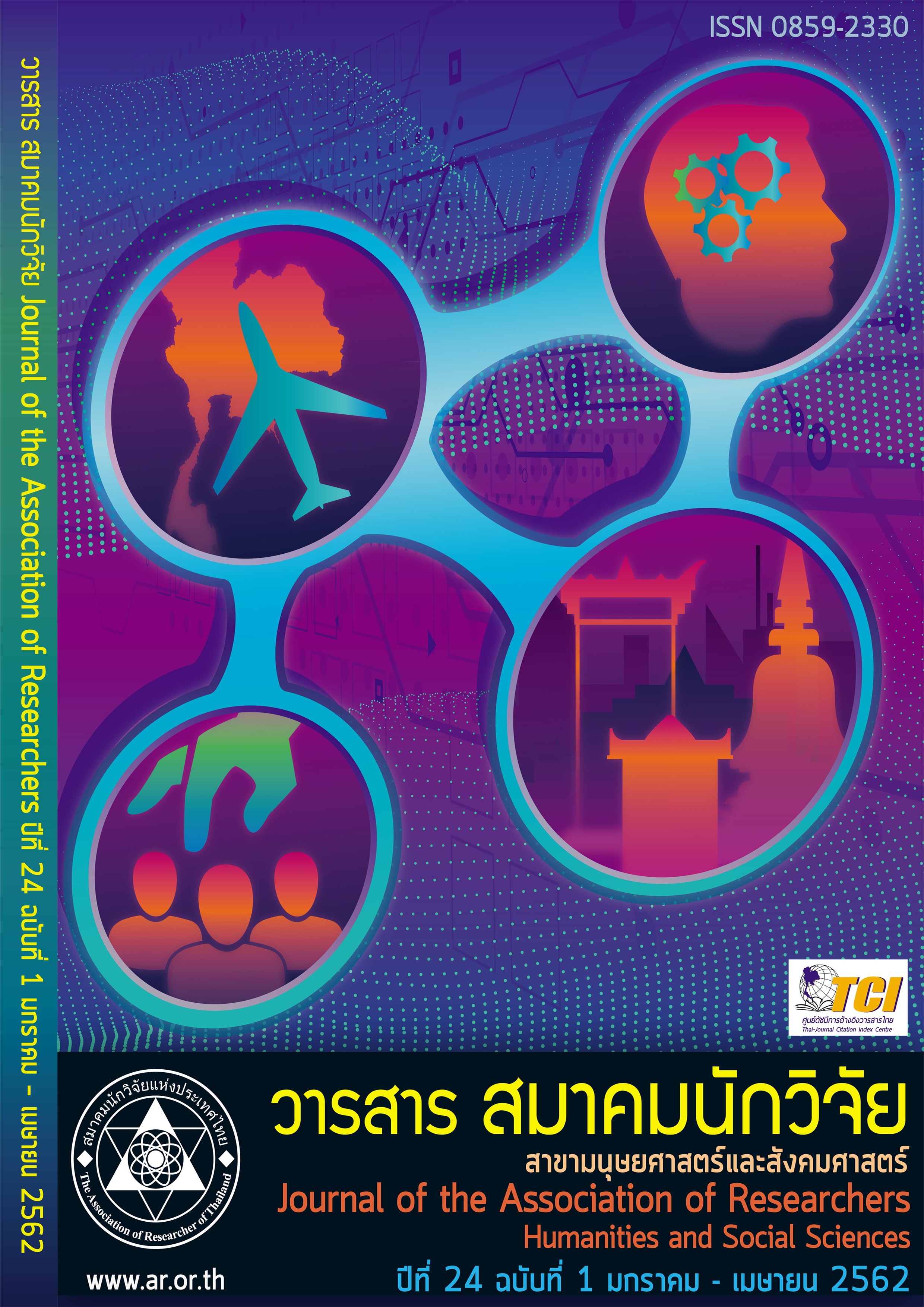โมเดลสมการโครงสร้างองค์ประกอบของการเปิดเผยตนเองในเครือ ข่ายสังคมออนไลน์ของนักศึกษาระดับปริญญาตรี มหาวิทยาลัยเอกชน เขตภาคกลางของไทย
Main Article Content
บทคัดย่อ
การวิจัยนี้มีวัตถุประสงค์ 1. เพื่อศึกษาการเปิดเผยตนเองในเครือข่ายสังคมออนไลน์ 2. เพื่อวิเคราะห์องค์ประกอบ ของการเปิดเผยตนเองในเครือข่ายสังคมออนไลน์ และ 3. เพื่อตรวจสอบความสอดคล้องของโมเดลสมการโครงสร้างองค์ ประกอบของการเปิดเผยตนเองในเครือข่ายสังคมออนไลน์ของนักศึกษาระดับปริญญาตรี มหาวิทยาลัยเอกชนเขตภาค กลางของไทยกับข้อมูลเชิงประจักษ์ กลุ่มเป้าหมายคือนักศึกษาวัยรุ่นที่กำลังศึกษาในระดับปริญญาตรี (แบบปกติ 4 ปี) ชั้น ปีที่ 1 – 4 ในมหาวิทยาลัยเอกชนสังกัดสถาบันอุดมศึกษาเอกชนแห่งประเทศไทยเขตภาคกลางใน ภาคเรียนที่ 1/2559 โดยใช้การเลือกผู้ให้ข้อมูลแบบการสุ่มเชิงก้อนหิมะ (Snowball sampling) โดยมีการกำหนดคุณสมบัติเฉพาะ จำนวน 30 คนเพื่อใช้ในการสัมภาษณ์ และจำนวน 400 คนเพื่อใช้ในการสอบถามด้วยแบบสอบถาม วิเคราะห์ข้อมูลด้วยการวิเคราะห์ เนื้อหา การวิเคราะห์องค์ประกอบ ผลการวิจัยพบว่า การเปิดเผยตนเองในเครือข่ายสังคมออนไลน์มี 5 มิติ ได้แก่ 1. มิติความกว้าง 2. มิติความลึก 3. มิติเจตนา 4. มิติความซื่อสัตย์ ความถูกต้อง และ 5. มิติการนำเสนอด้านบวก ลบ องค์ประกอบของการเปิดเผยในเครือ ข่ายตนเองสังคมออนไลน์ของนักศึกษาระดับปริญญาตรีมหาวิทยาลัยเอกชนเขตภาคกลางของไทยมี 6 องค์ประกอบและ มีความสอดคล้องกับข้อมูลเชิงประจักษ์ ได้แก่ 1. ความต้องการเล่าเรื่องของตนเอง 2. การติดตามเรื่องราวของผู้อื่น 3. การสร้างแรงบันดาลใจในชีวิต 4. บันทึกความทรงจำในเหตุการณ์ 5. การระบุตัวตน 6. ความตั้งใจโดยมีการพิจารณา ซึ่ง สามารถอธิบายความแปรปรวนได้ร้อยละ 68.972 และมีความสอดคล้องกับข้อมูลเชิงประจักษ์
Article Details
บทความที่ปรากฏในวารสารนี้ เป็นความรับผิดชอบของผู้เขียน ซึ่งสมาคมนักวิจัยไม่จำเป็นต้องเห็นด้วยเสมอไป การนำเสนอผลงานวิจัยและบทความในวารสารนี้ไปเผยแพร่สามารถกระทำได้ โดยระบุแหล่งอ้างอิงจาก "วารสารสมาคมนักวิจัย"
References
Hashem Abdullah Almakrami. (2015). Online Self-Disclosure Across Cultures : A study of Facebook use in Saudia and Australia. Doctor of Philosophy. School of Information System Science and Engineering Faculty: Queensland University of Technology.
Jin Yeong Bak, Chin-Yew Lin, Alice Oh. (2014 ). Self-disclosure topic model for classifying and analyzing Twitter conversations. Proceedings of the 2014 Conference on Empirical Methods in Natural Language Processing (EMNLP). P 1986-1996.
Jourard. (1971). Self-disclosure: An experimental analysis of the transparent self. Oxford, England: John Wiley.
Krisporn Prasitvisit. (2015). Communication and social capital through Facebook and quality of life in the real world. Thesis, Doctor of Philosophy, Graduate School, Dhurakij Pundit University. (in thai).
Office of Electronic Transaction Development Public Organization. (2015). User Behavior Survey Report Internet in Thailand, 2015. Pages 30-53. (in thai).
Pitchayanee Pootrakul Pseudomontha. (2016). Self-Disclosure through Social Media: The Guideline for Study on Influential Factors and Effects. Journal of Behavioral Sciences for Development Behavioral Science Research Institute. Srinakharinwirot University. p2-16. (in thai).
Richard Johnson, Dean Wichern. ( 2007). Applied Multivariate Statistical Analysis (6thed.). Upper Pearson Education,Inc.
Shan Xu, Zheng Wang, Prabu David. (2016). Media multitasking and well-being of university students. Computers in Human Behavior. p.242-e250.
Stutzman. (2011). Factors Mediating Disclosure in Social Network Sites. Computers in Human Behavior. P.590–598.
Wang Michael Stefanone. (2013). Showing Off? Human Mobility and the Interplay of Traits, Self-Disclosure, and Facebook Check-Ins. Sage Journals Vol31.
Wheeless Grotz. (1976). Conceptualization and Measurement of Reported Self-Disclosure. Human Communication Research .P. 338–346.
Wililuk Sareetrakul. (2559). The effect of using Facebook on teaching performance in Students. BU ACADEMIC REVIEW. Pages 129-139. (in thai).

